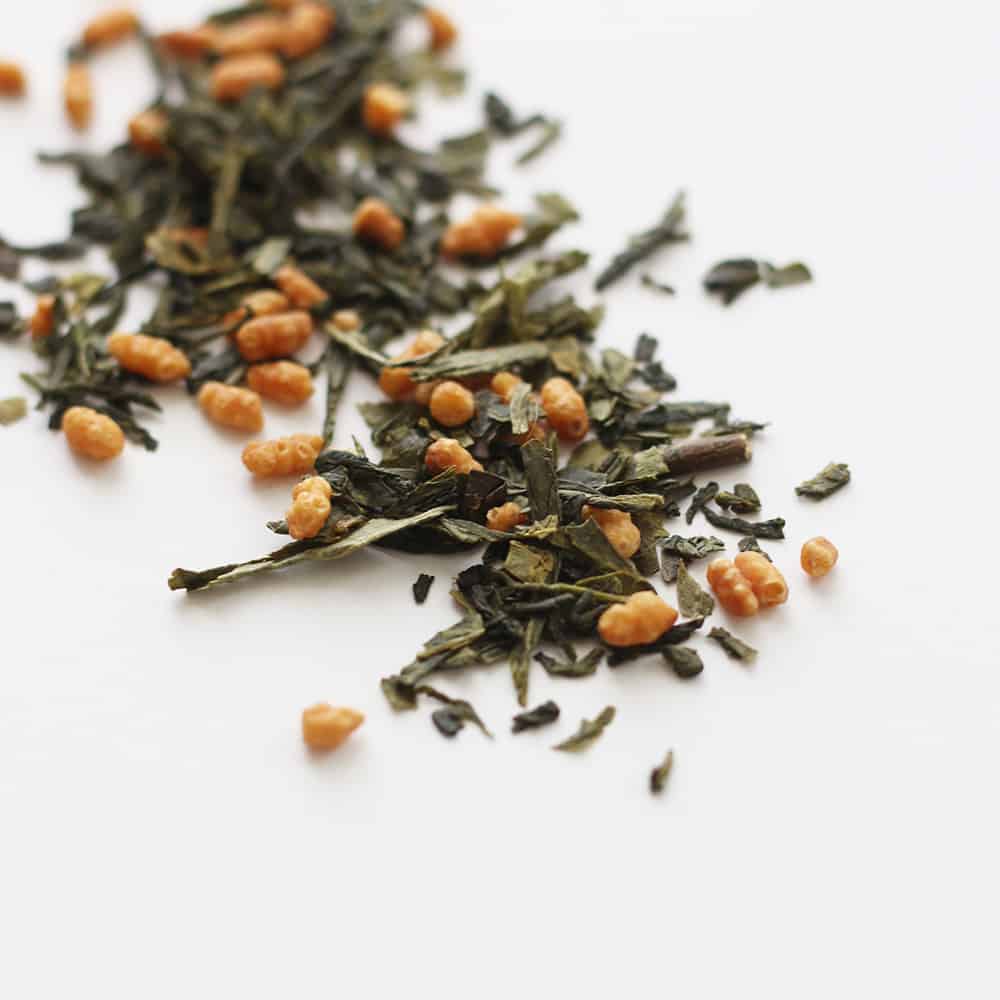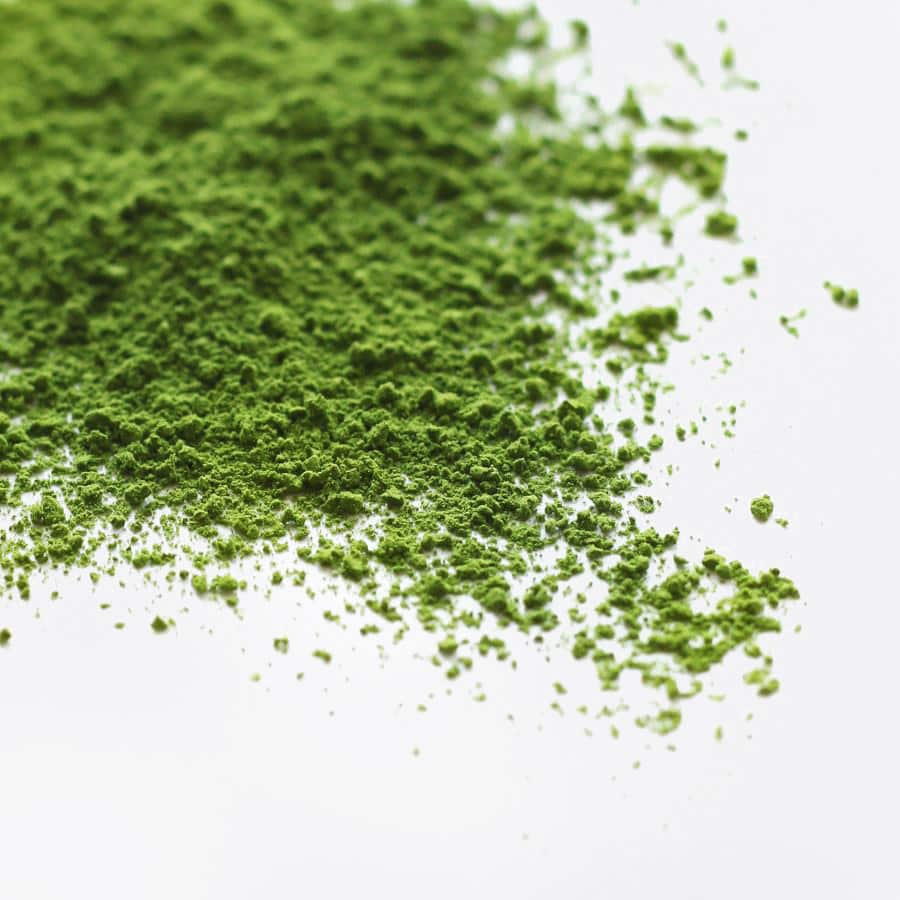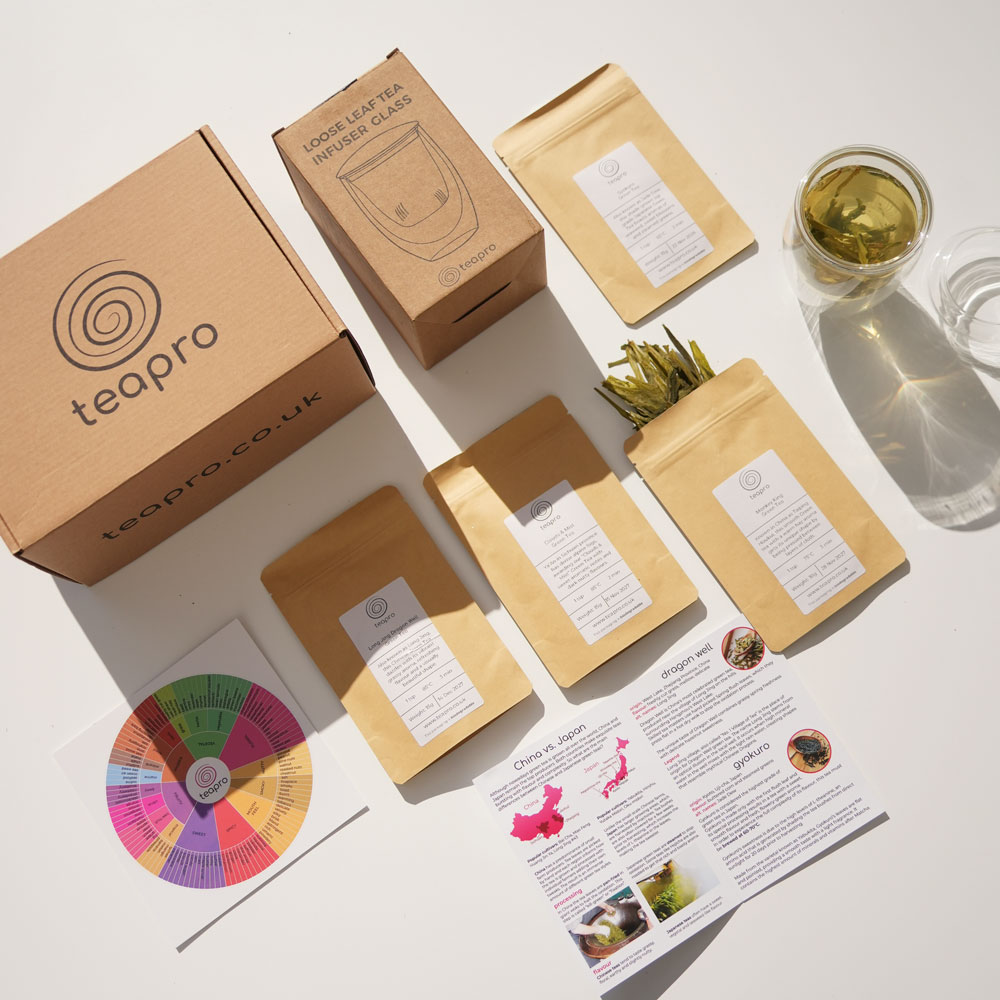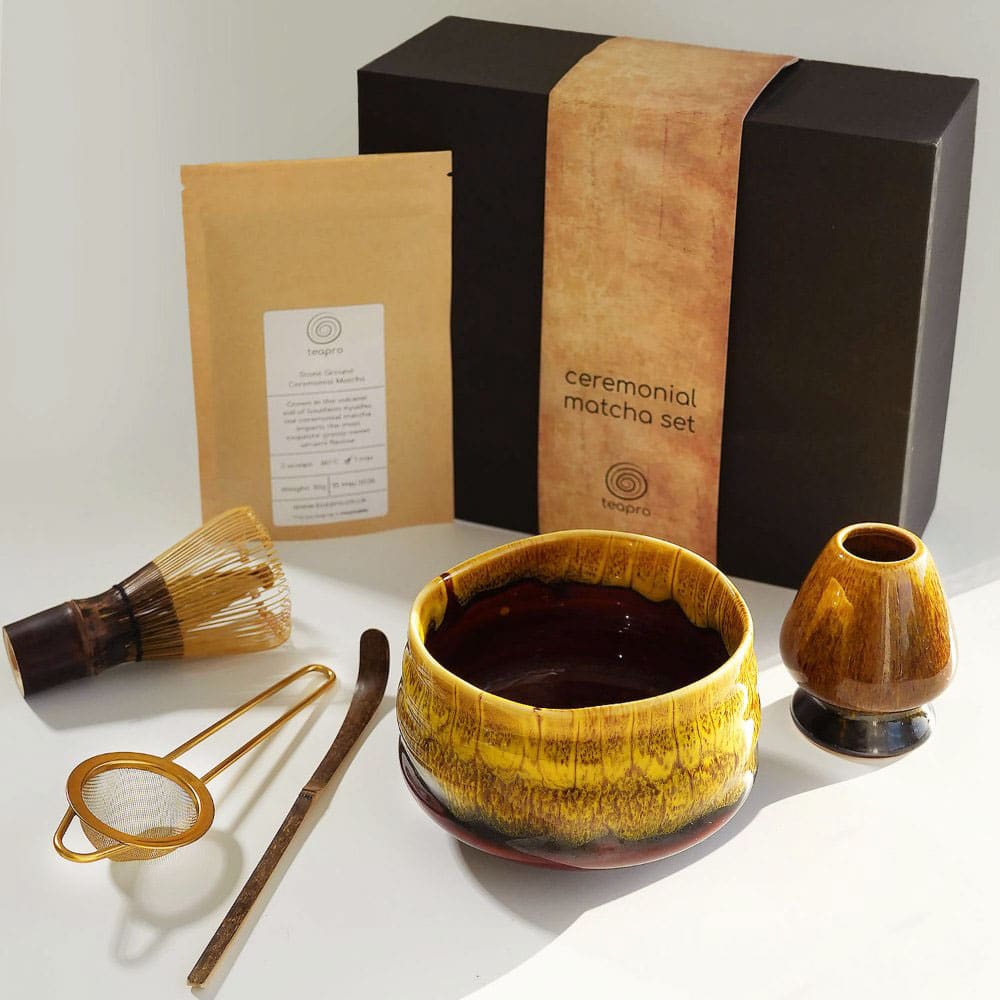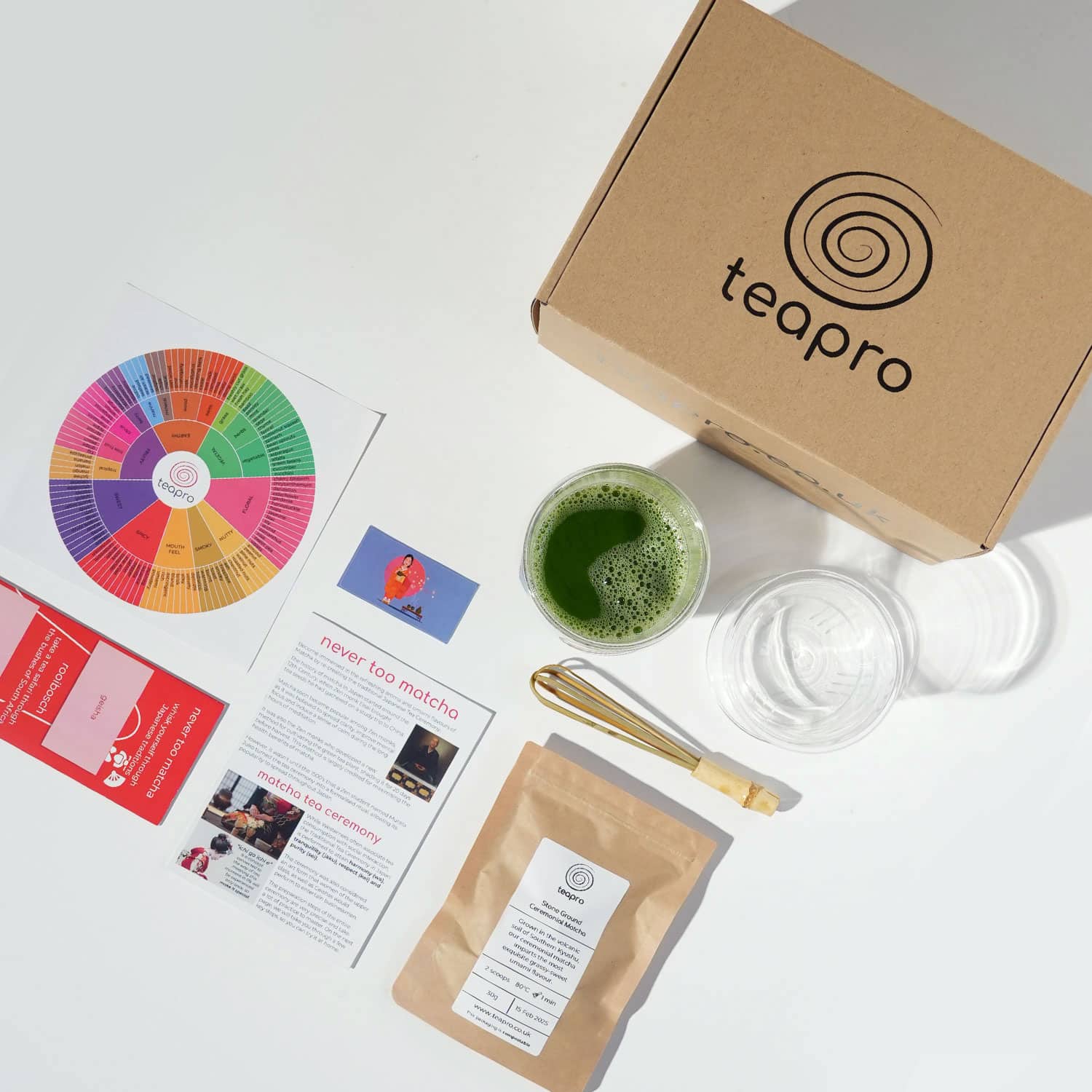Japanese green tea
Japanese green tea is renowned for its vibrant green colour, rich umami flavour, and powerful health benefits. Grown in Japan’s pristine tea regions and expertly steamed to preserve nutrients, Japanese green teas offer a clean, refreshing taste with notes of seaweed, grass, and sweetness.
Among the most revered Japanese teas is Gyokuro – a shade-grown green tea known for its deep umami flavour, low bitterness, and exceptional quality. It’s considered the highest grade of Japanese green tea from Japan, offering a more refined experience than standard Japanese Sencha green tea.
For a truly unique blend, Genmaicha combines green tea leaves with roasted brown rice, creating a warm, nutty flavour with a smooth, toasty finish. This approachable, comforting tea is a favourite daily brew across Japan.
Those seeking a concentrated source of antioxidants and L-theanine often turn to Japanese green tea Matcha powder – a vibrant powdered tea traditionally used in the Japanese tea ceremony. With its creamy texture and energising calm, matcha is ideal for both sipping and cooking.
Curious about how to prepare a green tea properly? We’ve made it simple with our easy-to-use infuser glasses and glass teapots – perfect for steeping everything from delicate green tea Japanese blends to exotic Chinese green teas. Whether you’re just starting out or a seasoned tea lover, our brewing tools and guides ensure a perfect cup every time.
our Japanese green tea selection
green tea gift set
The best green tea uk tea discovery box.
“Shades of Green” Green Tea Gift Set
New to green tea or looking to deepen your appreciation?
Our Green Tea Discovery Box is the perfect way to explore and compare the unique flavours of Japanese green tea and Chinese green tea side by side.
This curated selection features our favourite, handpicked teas sourced from small, sustainable farms in China and Japan.
From sweet and delicate to toasty and bold, each variety showcases the remarkable diversity of natural green tea.
It’s a luxurious tasting journey designed to help you understand what makes pure green tea so special, whether it’s the umami depth of a green tea Japanese Gyokuro or the nutty warmth of Long Jing Dragon Well.
Ideal as a gift or personal treat, this flavourful box is a must-have for green tea lovers and curious newcomers alike.
matcha gift sets
Premium Ceremonial Matcha Set – Blue Matcha Gift Set
Premium Ceremonial Matcha Set – Yellow Matcha Gift Set
“Never Too Matcha” Ceremonial Matcha Tea Gift Set
what is green tea?
Green tea is a type of tea made from the leaves of the Camellia sinensis plant. Unlike black tea or oolong tea, green tea is minimally oxidised during processing, which helps preserve its green colour and natural antioxidants like catechins and polyphenols.
It’s known for its fresh, grassy flavour and numerous health benefits, including antioxidant and anti-inflammatory properties.
Japanese tea shading
In Japanese green tea cultivation, shading is a traditional technique used to enhance both flavour and nutritional content – most notably in Gyokuro and Matcha production.
Tea plants are covered for 2–3 weeks before harvest to limit sunlight, which slows photosynthesis and boosts levels of L-theanine and chlorophyll.
This results in a sweeter, more umami-rich taste with less bitterness, along with a vibrant green colour. Shaded teas like Gyokuro and Matcha also contain higher concentrations of antioxidants and calming amino acids, offering a smoother flavour and greater health benefits, including improved focus and relaxation.
what does it taste like?
Japanese green tea is known for its refined, complex flavour – ranging from delicate and savoury to rich and toasty. Gyokuro, one of the highest grades, is shade-grown to develop an intense umami taste with natural sweetness, minimal bitterness, and a smooth, almost broth-like texture.
Ceremonial Matcha, also made from shade-grown leaves, offers a vibrant green colour, creamy mouthfeel, and a bold yet balanced flavour with vegetal notes and a mellow sweetness – perfect for a calming, focused energy boost.
In contrast, Genmaicha blends green tea with roasted brown rice, resulting in a warm, nutty flavour and a comforting, toasty aroma.
how to prepare Japanese green tea
To brew green tea properly, start with loose leaf tea for the best flavour and aroma. Use 1 teaspoon of tea leaves per cup (350ml) of water. Brew for 2-3 minutes.
Green tea brewing equipment
For the purest flavour experience, we recommend using a glass teapot or an infuser glass. Unlike clay or metal teapots, glass doesn’t retain aromas from previous brews, so there’s no risk of flavour contamination – just a clean, authentic taste every time.
Water temperature
Due to their delicate processing, we recommend brewing Japanese green teas at 80°C to avoid bitterness.
Can it tea be re-steeped?
You can generally re-steep green tea leaves 1 – 2 times, increasing the brewing time with each infusion.
Please note that everyone’s taste preferences are unique, so the key is experimenting within these guidelines to find the flavour profile you love most.
green tea FAQs
Japanese green tea stands out for its unique cultivation methods, especially shading techniques (like for Matcha and Gyokuro) that boost chlorophyll and L-theanine, resulting in a distinct umami flavor, vibrant color, and enhanced health benefits. It’s steamed, not pan-fired, preserving its fresh, vibrant character.
Look for vibrant green colour, a fresh grassy aroma, smooth umami flavour, and tightly rolled leaves. Certified origin and harvest dates can also indicate quality.
Yes. Premium teas offer richer flavour, more nutrients, and smoother taste, while lower-grade teas may taste bitter or stale and contain more stems or dust.
While no single tea “shrinks” belly fat, Japanese green teas like Matcha, Sencha, and Gyokuro contain catechins (especially EGCG) which can boost metabolism and aid fat oxidation, supporting overall weight management when combined with a healthy lifestyle.
Matcha is a powdered form of shade-grown tea leaves and is whisked into water. Sencha is made from sun-grown leaves and steeped as whole leaves. Matcha has more antioxidants and caffeine per serving.
“Best” is subjective and depends on your preference.
Matcha: King of green teas, offering intense umami, vibrant color, and potent health benefits due to consuming the whole leaf.
Gyokuro: The highest grade of loose-leaf, known for its deep umami, rich sweetness, and complex aroma from extensive shading.
Sencha: The most common and versatile, offering a balanced taste of fresh, grassy notes with a pleasant astringency. For high quality, look for vibrant color, fresh aroma, and a smooth, balanced taste without excessive bitterness.
Its higher cost reflects meticulous cultivation, often involving labor-intensive shading techniques (Gyokuro, Matcha), precise harvesting, and strict quality control. The unique processing, rarity of top grades, and high demand also contribute to its premium price.
The key is proper preparation:
Water Temperature: Use specific temperatures (lower for delicate teas like Gyokuro/Matcha, higher for Sencha). Too hot water can make it bitter.
Steep Time: Steep briefly (often 30-60 seconds for first infusion). Over-steeping causes bitterness.
Quality Water: Use filtered or spring water.
No Additions: Japanese green tea is traditionally enjoyed pure; sugar or milk is not typically added as it masks the nuanced flavors. They are commonly enjoyed both hot and cold, depending on preference and season.
Green tea is deeply embedded in Japanese culture for its refreshing taste, perceived health benefits, and its role in daily rituals and hospitality. It’s consumed throughout the day, often with meals, as a social beverage, and for its calming properties.
Most Japanese restaurants serve sencha or bancha, and occasionally genmaicha (green tea with roasted rice) for a nutty flavour.


